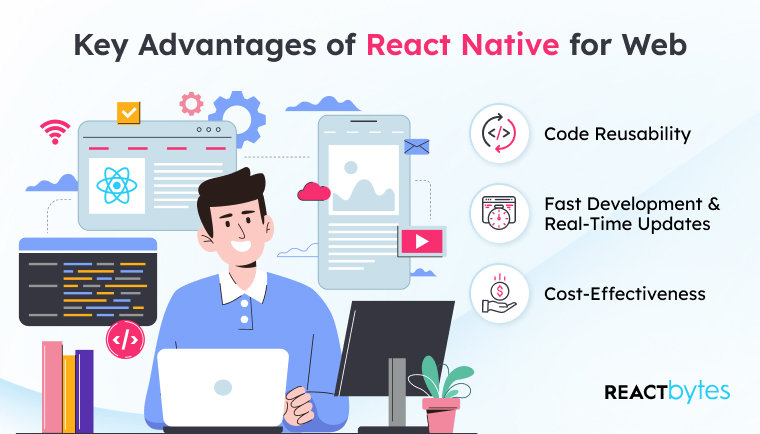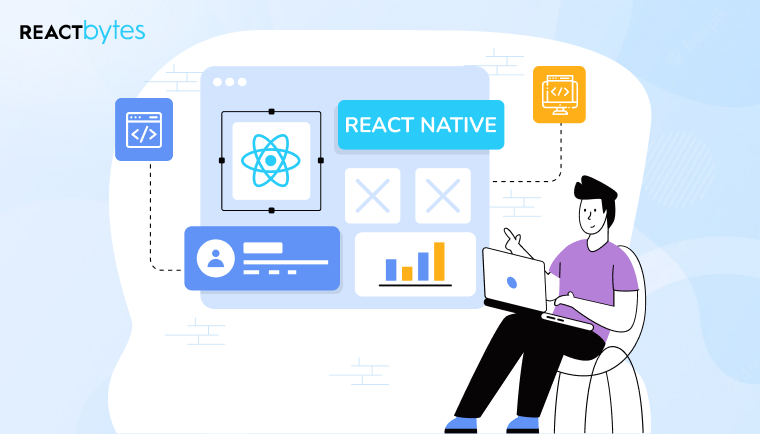In the ever-evolving world of web development, cross-platform solutions have become a game-changer, enabling applications to seamlessly run across multiple platforms.
This blog explores the dynamic world of cross-platform development, with a particular focus on the transformative impact of React Native.
The Rise of Cross-Platform Development
In recent years, cross-platform development has gained significant popularity among developers and businesses a like. The increasing demand for applications that can seamlessly run on multiple operating systems and devices has contributed to this rise.
With cross-platform development, developers can write code once and deploy it across various platforms, saving time and resources while reaching a wider audience.
Additionally, the availability of robust frameworks and tools has made it easier for developers to create high-quality, feature-rich applications that offer a consistent user experience across different platforms.
What Is React Native?
React Native is an open-source, cross-platform framework created by Facebook. Initially developed for mobile application development, it has since expanded its horizons into web development.
The framework, built on React, a JavaScript library for building user interfaces, allows developers to create applications for both web and mobile using a single codebase.
React Native for Web Development
React Native’s raid into web development has opened new doors for developers. It eliminates the line that separates mobile and web application development, allowing developers to reuse code across platforms.
The seamless integration of React Native has made it the preferred choice for those seeking an efficient cross-platform solution.
For web developers, React Native brings many advantages on the table, making it an enticing proposition.
The framework offers code reusability, enabling developers to share a substantial portion of their codebase between web and mobile applications.
This not only saves development time but also ensures consistency across platforms. Changes to the shared codebase automatically apply to both web and mobile applications, reducing redundancy and the risk of inconsistencies.
In Stack Overflow’s Developer Survey 2022, React Native was listed as one of the most loved frameworks, emphasizing its popularity among developers.
Key Advantages of React Native for Web
Trusted React Native App Development Companies have been leveraging the power of React Native to harness its multiple advantages for web development.
A study by the Institute of Electrical and Electronics Engineers (IEEE) reported a 33% reduction in development costs for cross-platform applications compared to developing separate native apps.

1. Code Reusability
One of the main advantages of React Native for web development is code reusability. With React Native, developers can write a significant portion of their codebase and use it across the web and mobile platforms. This approach minimizes redundancy and allows for the efficient sharing of components, reducing development time and costs.
Additionally, code reusability provides consistency between platforms. Any updates or changes caused to the shared codebase automatically reflect on web and mobile applications.
This streamlines the development process, resulting in a unified user experience, as users experience the same features and functionalities regardless of the platform they use.
2. Fast Development and Real-Time Updates
React Native introduces a feature known as “Hot Reload.” This feature significantly speeds up the development process. With Hot Reload, developers can see the effects of their code changes in real-time without the need to rebuild the entire application.
This instant feedback loop boosts developer productivity and allows quick iterations and fine-tuning, resulting in a faster development cycle.
Moreover, React Native enables efficient updates. Developers can push updates to the app without going through long-winded approval processes, which is common in native app development.
This skill is crucial for web development, as it ensures that new features or fixes can be deployed rapidly, keeping the web application up to date and responsive to user needs.
3. Cost-Effectiveness
React Native offers cost-effectiveness for web development projects. By Sharing a substantial part of the codebase between web and mobile applications . This cost savings is particularly beneficial for startups and businesses with limited budgets.
Moreover, the accelerated development cycle facilitated by React Native correlates to significant savings in both developer hours and project timelines.
The reduced time-to-market for web applications allows businesses to reach their audience sooner, gaining a competitive edge in the digital landscape. As a cost-effective solution that doesn’t compromise on quality, React Native is an ideal choice for web development projects of all sizes.
Challenges and Considerations
While React Native for web development offers numerous benefits, it’s essential to consider potential challenges. These challenges may include adapting to web-specific needs and addressing differences between mobile and web platforms.
A Trusted React Native App Development Company can help mitigate these challenges effectively.
Real-World Success Stories
Real-world examples exemplify the success of React Native in web development. Airbnb, a global leader in the hospitality industry, employed React Native to enhance its web experience.
By sharing a significant portion of it’s codebase across platforms, Airbnb achieved a consistent user experience, regardless of whether users accessed the platform via a web browser or a mobile app.
This efficiency in code sharing led to a 15% increase in user engagement on their website, showcasing the real-world impact of React Native in web development.
Airbnb’s adoption of React Native for web development led to a 15% increase in user engagement on their website, as reported in a case study by Airbnb Engineering.
Getting Started with React Native for Web
For developers considering React Native for web development, the journey begins with setting up the development environment. Understanding web-specific components and becoming familiar with libraries and tools designed for React Native are essential steps.
Developers can access a wealth of resources, including the official React Native website and documentation, which offer comprehensive guidance on embarking on the React Native for web development journey.
In addition, developers can explore the React Native for Web Quick Start Guide on the official React Native website for a detailed step-by-step tutorial to get started.
The Future of React Native in Web Development
GitHub’s Octoverse 2022 report showed that the number of contributors to React Native repositories increased by 19% compared to the previous year, indicating a growing community of developers.
The future of React Native in web development appears promising. As the framework continues to evolve, it’s likely to become an even more appealing choice for cross-platform web development.
React Native’s growing community, combined with the commitment of Facebook and other organizations, assures its long-term relevance.
Elevate your business to new heights with a cutting-edge React-powered website

Conclusion
In summary, React Native leads the way in the cross-platform revolution, transforming how we approach web development. With its outstanding benefits, code reusability, and robust developer support, it’s a potent and budget-friendly solution for creating web applications that operate seamlessly on various platforms. Count on React Native App Development Services to elevate your web projects to the next level.
